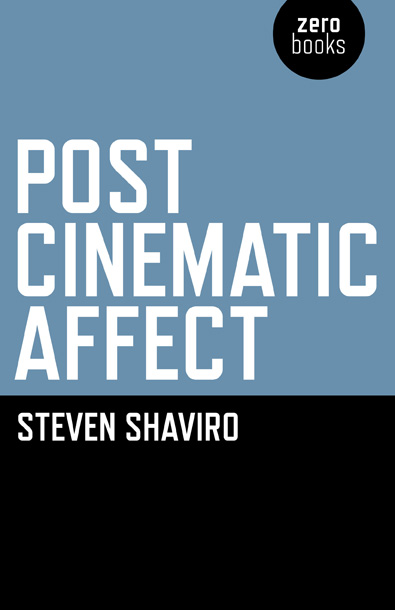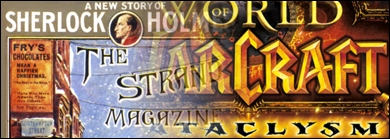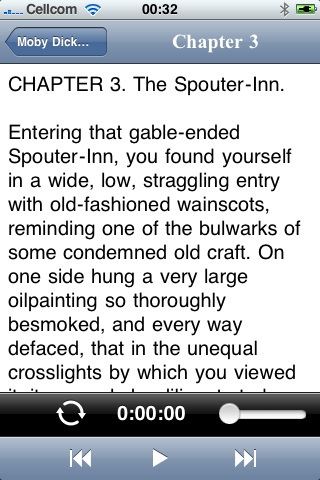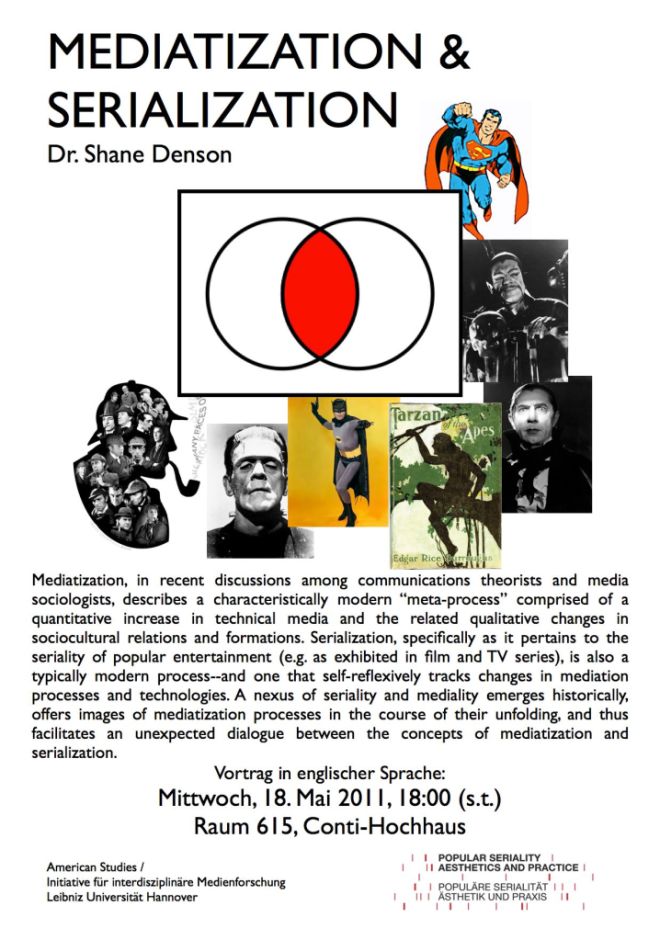Steven Shaviro, probably best known for his now-classic book The Cinematic Body (an early but still one of the best explorations of the meaning of Deleuzo-Guattarian theory for embodied spectatorship; and one that Shaviro himself has critically reconsidered from a distance of 15 years in an essay called “The Cinematic Body Redux”), has recently published a book entitled Post-Cinematic Affect (Zero Books, 2010), which is summarized, on the publisher’s website, like this:
Post-Cinematic Affect is about what it feels like to live in the affluent West in the early 21st century. Specifically, it explores the structure of feeling that is emerging today in tandem with new digital technologies, together with economic globalization and the financialization of more and more human activities. The 20th century was the age of film and television; these dominant media shaped and reflected our cultural sensibilities. In the 21st century, new digital media help to shape and reflect new forms of sensibility. Movies (moving image and sound works) continue to be made, but they have adopted new formal strategies, they are viewed under massively changed conditions, and they address their spectators in different ways than was the case in the 20th century. The book traces these changes, focusing on four recent moving-image works: Nick Hooker’s music video for Grace Jones’ song Corporate Cannibal; Olivier Assayas’ movie Boarding Gate, starring Asia Argento; Richard Kelly’s movie Southland Tales, featuring Justin Timberlake, Dwayne Johnson, and other pop culture celebrities; and Mark Neveldine and Brian Taylor’s Gamer.
Now, over at his wonderfully named and always intriguing blog The Pinocchio Theory (which you can also always find in the handy “blogroll” on the right-hand side of this very blog), Shaviro has begun outlining the meaning of “the post-cinematic” as it appears in that book. This is what Shaviro says about the purpose of his theorization of “the post-cinematic”:
The particular question that I am trying to answer, within this much broader field, is the following: What happens to cinema when it is no longer a cultural dominant, when its core technologies of production and reception have become obsolete, or have been subsumed within radically different forces and powers? What is the role of cinema, if we have now gone beyond what Jonathan Beller calls “the cinematic mode of production”? What is the ontology of the digital, or post-cinematic, audiovisual image, and how does it relate to Bazin’s ontology of the photographic image? How do particular movies, or audiovisual works, reinvent themselves, or discover new powers of expression, precisely in a time that is no longer cinematic or cinemacentric? As Marshall McLuhan long ago pointed out, when the media environment changes, so that we experience a different “ratio of the senses” than we did before, older media forms don’t necessarily disappear; instead, they are repurposed. We still make and watch movies, just as we still broadcast on and listen to the radio, and still write and read novels; but we produce, broadcast, and write, just as we watch, listen, and read, in different ways than we did before.
The full thought-provoking post, which is highly recommended, can be found here. Enjoy!





